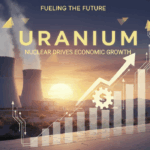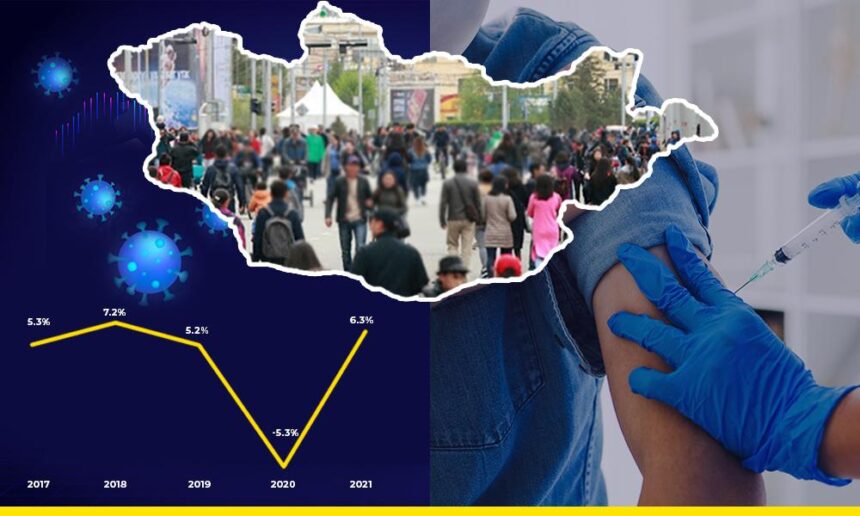Humankind has been fighting the COVID-19 pandemia for two years now, and the battle continues. Globally, 215 million people have been infected, and 4.5 million passed away as of 26th August, 2021. Many countries are experiencing a deteriorating socioeconomic, condition, developing countries are exhausted, and some of them are succumbing. In Mongolia, 202 thousand people have been infected, and 919 have died.
Coincidentally during the pandemic, but mostly due to it, the global trend towards a digital transition has accelerated, globalization has slowed down, and the geopolitical tensions are rising. Each country is adapting to these three major trends, changing its behaviors, and fine tuning its government policies accordingly.
Thanks to the closing of the border in February 2020, there have been no domestic cases for ten months in Mongolia. During this time, developed countries began to make, test, and produce vaccines, which offered an advantage for us in the fight against the pandemic. However, the economy has come to a standstill due to a series of strict lockdowns in 2020. As a result, GDP fell for the first time in three decades to a negative 5.3% in 2020.
The PM L. Oyun-Erdene’s cabinet was established in January 2021 and approved “The comprehensive plan to dedicate 10 trillion tugriks to protect citizens’ health and recover the economy.” What has Mongolia achieved in this battle on two fronts, health, and economy? To what should we pay more attention?
The health front
To date, Mongolia has purchased 73% of the 5.6 million doses of imported vaccines . Today, 63% of the population has received two doses, and 68% received one dose, joining the top 15 countries globally. According to a study of the National Center for Communicable Diseases, vaccines prevented infections in 75% and prevented from death in 93%. As a result, only 6% of our entire population was infected, and 0.5% passed away, which is five times less than the global average. 80% of those who passed away were not vaccinated at all, or, had received a single dose. Thanks to our small population and rapid vaccination, the infection cases were mostly mild and recovery was quick despite the constant rate of infection. Our healthcare workers are working hard and playing a special role. According to the State Emergency Commission, vaccination of 70% of the entire population soon will build “herd immunity.”
The pandemic is significantly affecting the education sector. Due to the citizens’ demands, in-person classes will start after two years of online classes. Although 82% of children aged 12-17 received the first dose of the vaccine, the total number of infections is now exceeding 2,000 per day. These days, infection cases are more prevalent in rural areas, the delta version accounting for one-third of the total patients. This variant brings new challenges all over the world. The pandemic has exposed the weaknesses of our health infrastructure and highlighted focal areas to improve, such as training of personnel, funding, and operations.
The economic front
In July 2021, Mongolia’s GDP increased by 6.3% since exactly a year ago, and is recovering in a V shape from a negative 5.3% in 2020. The budget deficit was at 5.4% of the GDP, significantly lower than the previous year’s 12%. Despite global transportation and logistics hindrances affecting our foreign trade, rising coal, copper, iron, and gold prices, which account for most exports, have increased budget revenues.
As part of the above-mentioned economic stimulus program, the government has planned to supply 10 trillion tugriks to the market, one-third of which has already been disbursed. Of that, 2 trillion has been spent on saving 225,000 jobs, according to the finance minister. In addition, the government has put into circulation the resources of commercial banks concentrated in the BOM’s securities, issued six loans with an interest rate of 9%, and issued ultra-soft loans at a 3% interest to individuals and businesses. This 6% loan causes a budget burden of 120 billion tugriks per year for 2 trillion tugriks.
In the first half of this year, 650 billion tugriks was paid by the Erdenet factory for citizens’ and enterprises’ electricity, heating, water supply, and waste services, and 964 billion tugriks was produced by the Erdenes Silver Resource SOE for pension-based loan debt relief. The government provides 72 types of welfare services to 60% of the population. Food vouchers are given to 250 thousand people, and 100 thousand tugriks allowance is given per month to 1.2 million children. In 2021, almost 2 trillion tugriks will be spent on welfare and child allowances. One-third of the population is poor.
The money supply keeps increasing. Bank loans increased by only 12.5% to 19.5 trillion tugriks in spite of the rise in the money supply of 26% to 27 trillion tugriks and increase of savings by 34% to 18.6 trillion tugriks (13.5 trillion owned by citizens) in the first half of 2021 compared to the same period last year. This indicates low business confidence. Savings interests have fallen, but the savings amounts have increased. Moreover, one-third of the population has savings.
The stock market is expanding exponentially for the first time (Mongolian Stock Exchange market valuation was 3 trillion tugriks at the beginning of the year, and now it has risen to 4.1 trillion in 7 months). Apartment prices have increased by 11% in a year, as of July 2021, 1 sq meter of apartment costs 2.73 million tugriks in Ulaanbaatar, and prices have risen by 7.8% in the capital city. (Source: Tenkhleg Zuuch)
A sudden increase in the money supply with no value creation has therefore led to the demand overweighing the supply. This is what the situation at the two battlefronts in our country looks like.
It can be concluded that the Mongolian pandenomics is preceding a long-term price increase. The same goes for other countries that also distribute stimulus cash to their citizens. This is because when value is not created, the distribution of money and the promotion of demand inevitably lead to a shortage of goods and services and inflate prices. The extent to which inflation will affect our country with a simple economy, where natural resources are mined and sold to a single country to earn foreign currency, and where there are no other notable exports, will depend on future fluctuations in mineral prices and the behavior of our neighbors.
Therefore, diversifying the economy is vital. A final product needs to be developed and compete on the world market. Mongolians discuss this change often, to no avail to this day. The main culprits are price control, inaccurate welfare, backdoor land sales, a politicized judiciary without the ability to establish justice, and the ever-growing uncontrolled state properties system. Society expects the government to act with certainty and to make advancements. What brings at least a little hope, is the recent detection of corruption cases linked to mid-level government officials, namely the crimes of some prosecutors and generals, the 36 billion tugriks offshore account owned by the Zamiin-Uud border customs head, and the fraud regarding swine fever vaccines.
2021.08.26
Trans. by Riya.T and Munkh-Erdene.D







